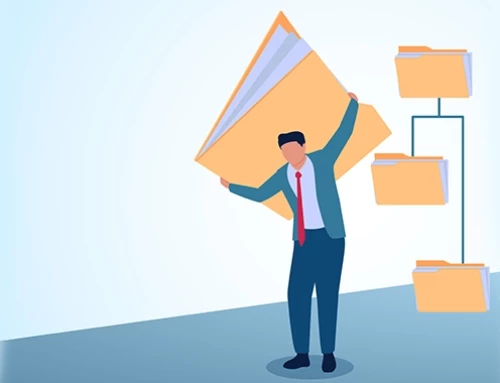Contents
What is legal translation?
Lawyers have a lot of responsibilities and have to deal with a lot of legal documents every day. However, this doesn’t mean they know everything about translating or that they don’t need help with their tasks. In fact, it’s quite the opposite: lawyers often need legal translation services because their job is so complicated and there are so many details involved in what they do. Legal translators (like blarlo) can help them with all those challenges and make their lives easier by providing accurate translations that meet their requirements.
Legal translation is a specialized field, and it’s important to know what you’re getting into before you begin. The first thing to understand is that legal translation is a two-way process. You can’t just translate from one language into another. A good translator must have an excellent understanding of both languages involved, as well as a deep knowledge of the legal system in which those languages are used (i.e. if you’re translating from Spanish into English, it would be helpful if you knew something about American law).
A good translator will also need specialized vocabulary specific to their area of expertise; this can include legal terms like “subpoena” or “habeas corpus,” but also more general words like “family member” or “place of employment.”
Why you need legal translation
As a law firm, you are likely to encounter translation on a daily basis. Legal documents such as contracts and court orders need to be translated into other languages in order to be understood by the parties involved.
The most important reason why you should hire translators is that they will save you time and money. The process of translating legal documents can be quite complex, which means that using an experienced translator will ensure that everything is done right and as quickly as possible.
The most important stages of a legal translation process
The first stage in the legal translation process is Translation. This involves translating documents from one language into another, and it’s usually done by a native speaker of that language.
Next comes Editing, which involves making sure that the document has been translated correctly before it’s sent off to clients or other parties who need to see it in their own language. Editing also includes correcting errors like spelling mistakes or grammar issues.
The third step is Proofreading; checking a final draft against your original source material for any remaining errors that may have slipped through during earlier stages of production (for example, if you missed something while translating). Proofreading should also include checking formatting standards so that everything looks neat when printed out on paper or digitally displayed online!
Finally comes Quality Assurance (QA), which ensures all previous steps have been executed properly before sending off anything else related to this project
What kinds of documents do I need to translate?
What kinds of documents do I need to translate?
- Legal documents. such as contracts and court filings
- Legal agreements. including those between parties in an ongoing dispute or litigation
- Legal opinions that have been requested by your client (for example, in order for them to understand the likelihood of success in a case)
Legal translators are also often asked to provide translations of correspondence with opposing counsel. This can include everything from emails about scheduling meetings and filing deadlines, to internal memos discussing strategies for court cases.
What kind of people should I hire for my legal translation project?
In order to ensure that your translations are accurate, you should hire translators who are native speakers of the target language and have a good command of legal terminology. They also need to be able to work independently.
You should also make sure that your translators have a good command of both English and your source language since they will need to understand both languages in order to translate efficiently.
Documents determine the translator
Before you start translating, it’s important to know what type of documents need translating in order to find the right translator for your project.
-
-
- What type of document are you looking to translate? The answer depends on what kind of law firm you work at and what kind of work they do. For example, if your firm handles immigration cases then it will be very helpful if the translator has experience working with these types of documents because they often require specialized terminology and legal language.
<li
-
>How technical is this document?
- A lot depends on how technical or complicated the original text is; if there are lots of legal terms used throughout then finding someone who knows those terms well would be crucial for getting accurate translations that reflect the meaning behind them correctly.
The challenges of hiring a legal translator
When you’re looking to hire a legal translator, there are several things to keep in mind. First and foremost, it’s important to find someone who has experience translating legal documents. The legal translation itself can be quite challenging because the documents involved often contain complex terminology and language that must be translated accurately in order for them to be effective. Translators should also have some knowledge of law so that they can properly interpret the document’s meaning before translating it into another language.
When you’re looking to hire a legal translator, there are several things to keep in mind. First and foremost, it’s important to find someone who has experience translating legal documents. The legal translation itself can be quite challenging because the documents involved often contain complex terminology and language that must be translated accurately in order for them to be effective. Translators should also have some knowledge of law so that they can properly interpret the document’s meaning before translating it into another language.
How to work efficiently with your legal translator
Here are some tips to ensure that your legal translation project goes smoothly:
- Make sure the translator understands the nature of the project. If you’re working on a contract, for example, make sure your translator knows about all of its clauses and conditions so he or she can translate them accurately.
- Make sure your translator understands all terms and conditions of the project before accepting it. This will help avoid any surprises down the road if there’s anything unusual about how you want certain things translated (e.g., technical terms).
- Use a CRM (Customer Relationship Management) system that offers project management tools such as task tracking, time tracking, document sharing, and communication features so you can keep track of everything from start to finish. Runsensible offers these features as well as other helpful ways for managing translations like automatic email reminders and the ability to set up tasks in the system that will automatically send out an email when the task is complete. Our project management section in Runsensible, allows you to easily manage your team of translators. You can create different types of projects and assign them to specific translators, as well as monitor their progress throughout the process and simply store all documents and files in one place for easy access. You can also see a history of all past projects, which makes it easy to refer back to previous ones if needed. If you have any questions feel free to shoot us an email at support@runsensible.com or sign up for our free trial to see how easy it is to manage your projects in Runsensible.
Conclusion
As you can see, there is much to think about when it comes to legal translation. You need to know what kind of documents you’re working with and how they should be translated. You also need to know who will be doing the work so that you can hire the right person for your project.
But once all this has been taken care of, you will have a better understanding of how your translation process works and be able to make decisions more easily!
FAQ
1.Where can I find legal translation services?
Websites like Acolad, Stepes, or Semantix offer reliable legal translation services.
2.Can I communicate with my translator through CRM tools?
Runsensible has been integrated with 3 different methods of communication. You can use email, sms, or SIP phone system that come with Runsensible’s basic plan to communicate with your translator anywhere, at any time.
3.How can I check my translator’s progress?
If you connect with your translator through Runsensible, they can upload their work onto runsensible’s database which allows you to check their work.
Disclaimer: The content provided on this blog is for informational purposes only and does not constitute legal, financial, or professional advice.






